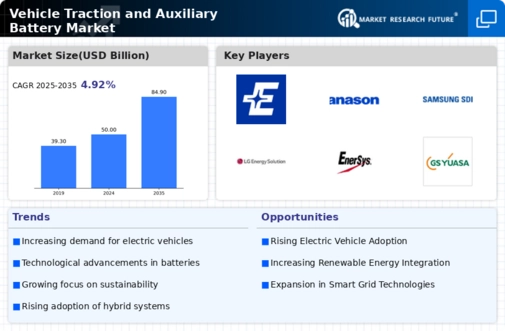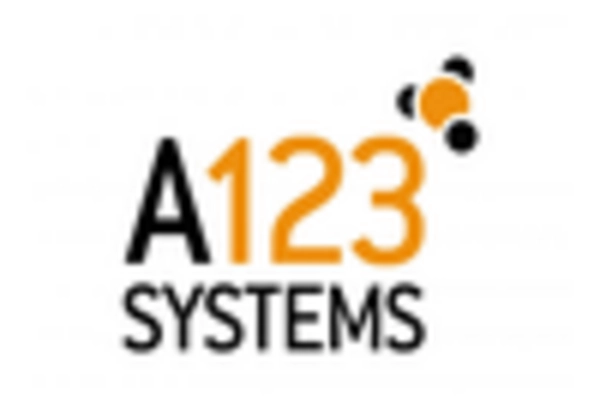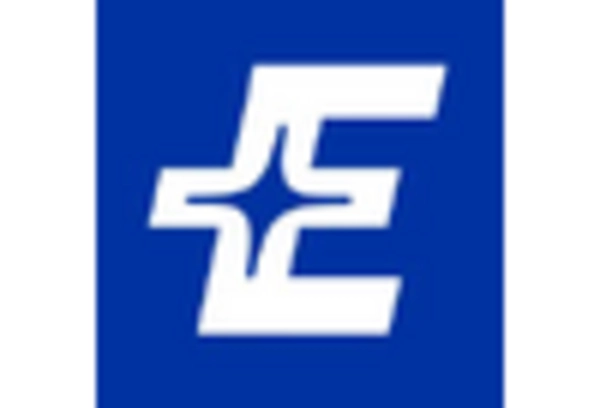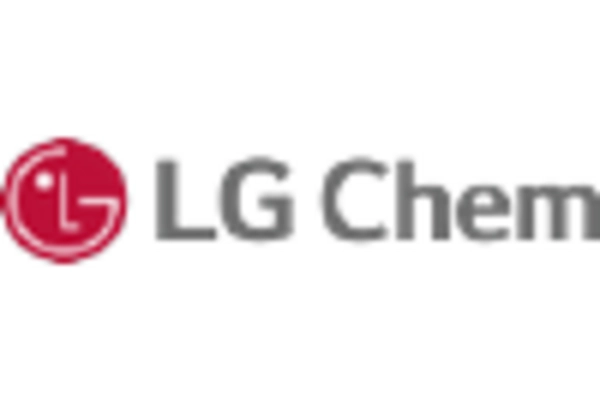The Vehicle Traction and Auxiliary Battery Market is characterized by a dynamic competitive landscape driven by the increasing demand for efficient energy storage solutions in both electric and conventional vehicles.
Factors such as advancements in technology shift towards sustainable energy sources and growing awareness among consumers regarding the importance of battery performance are shaping market trends.
Companies within this sector are investing in research and development to enhance battery longevity, performance, and capacity while lowering production costs. This competitive environment is characterized by constant innovation and strategic partnerships aimed at fulfilling the diverse needs of both the automotive industry and consumers.
The demand for high-performance batteries in various applications, including hybrid, electric, and conventional vehicles, is attracting new entrants and encouraging established players to strengthen their market position.
Exide Technologies enjoys a prominent position in the Vehicle Traction and Auxiliary Battery Market, leveraging its extensive experience and technological expertise in battery manufacturing. The company is recognized for its strong brand equity and has established a reputation for producing reliable and efficient batteries that cater to a variety of vehicle types.
Exide Technologies' commitment to innovation enables it to introduce advanced battery technologies, enhancing performance and efficiency, which is critical in the competitive automotive landscape. The company has strategically positioned its products across diverse global markets, ensuring broad market presence and responsiveness to regional demands.
With its strong focus on sustainability and environmental stewardship, Exide Technologies is not only aligning with industry trends but also contributing to the growing shift towards eco-friendly battery solutions.
Panasonic has carved out a significant presence in the Vehicle Traction and Auxiliary Battery Market, showcasing its diverse range of high-quality battery products tailored for various automotive applications.
The company's deep-rooted expertise in battery technology, particularly in lithium-ion batteries, positions it as a formidable competitor. Panasonic's commitment to innovation is evident through its continuous investments in research and development, resulting in advanced battery formulations that deliver high performance, energy density, and durability.
This focus on cutting-edge technology has solidified Panasonic's reputation as a go-to supplier for manufacturers seeking reliable energy solutions for electric and hybrid vehicles.
The company's strategic collaborations with automotive manufacturers have further strengthened its market foothold, ensuring that Panasonic remains at the forefront of the evolving battery landscape while addressing the increasing demands for clean energy and efficient vehicle performance.


















Leave a Comment